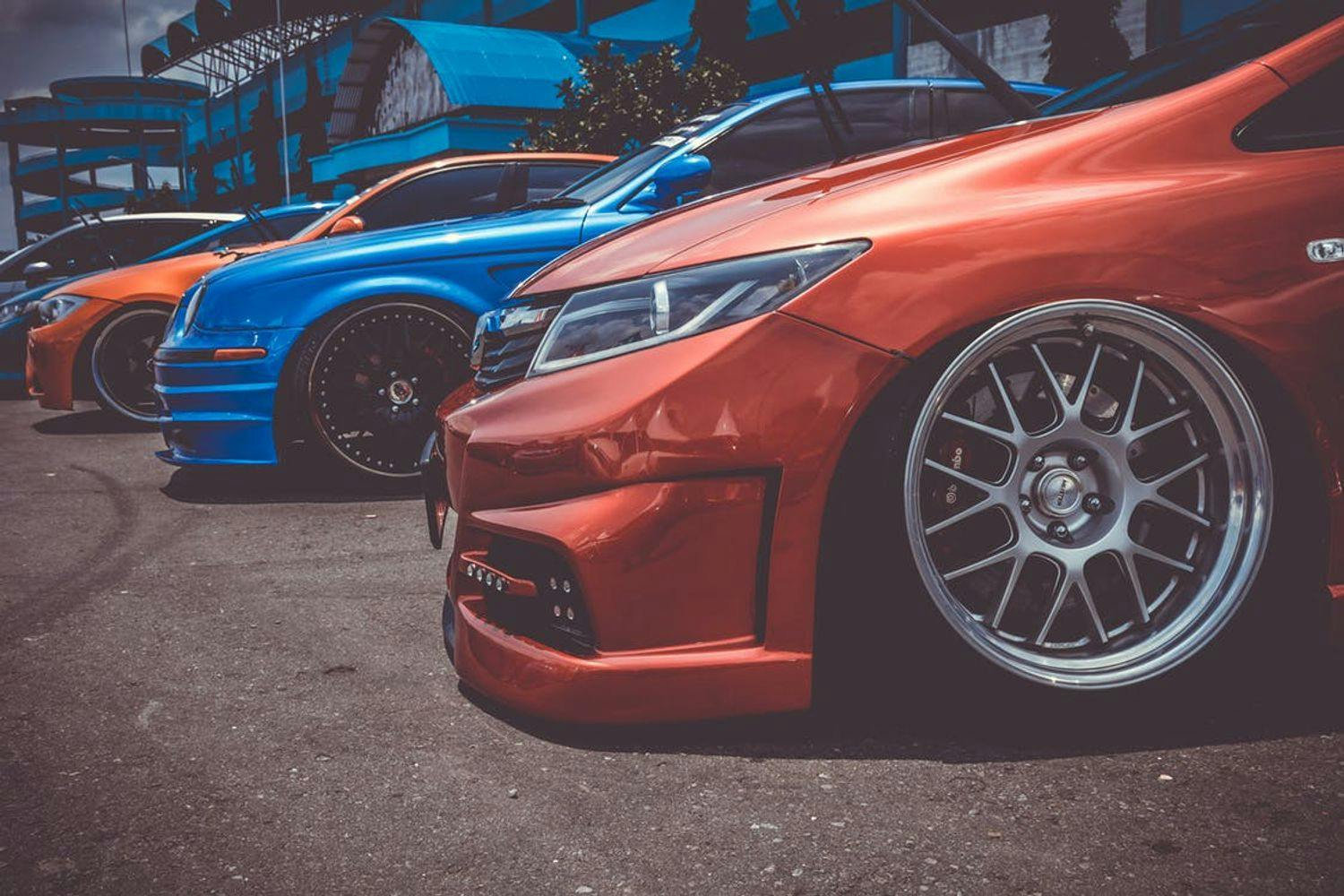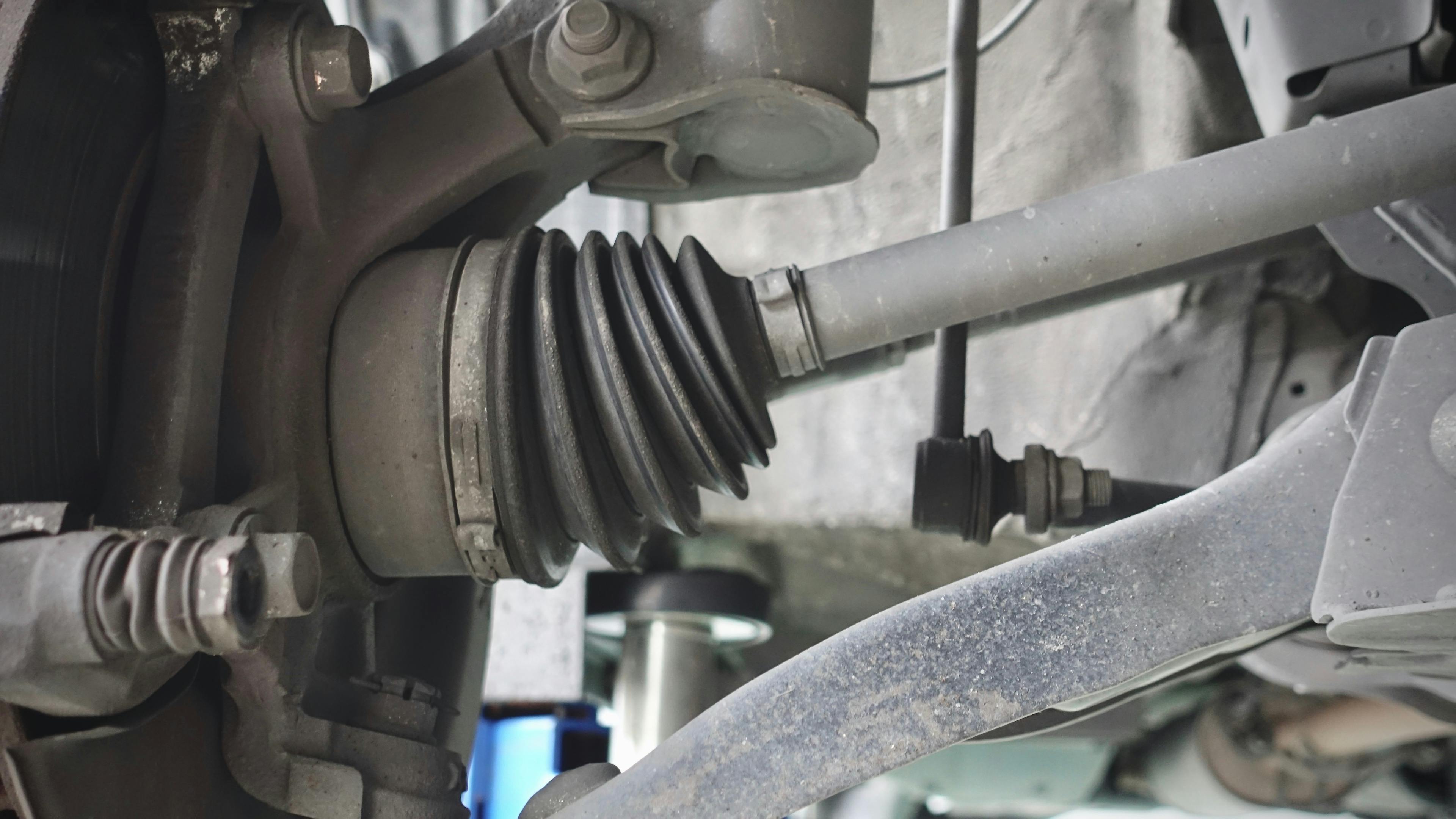Powertrain Layout: How does it affect the car?

The powertrain layout describes where the engine is located in the car and which axle is driven.
In addition to this information, however, the powertrain layout choice is also a key factor in determining the car's driving characteristics, production costs, and possible car bodies.
Spis treści
- Engine placement
- 1. Engine placed in the front
- 2. Engine placed at the back
- 3. Engine placed in the middle
- Engine placement characteristics
- Understeer
- Oversteer
- Elimination of oversteer and understeer
- Drive axle
- Powertrain layouts and their pros and cons
- 1. Front engine and rear-wheel drive
- 2. Front engine and front-wheel drive
- 3. Rear engine and rear-wheel drive
- 4. Engine in the middle and rear-wheel drive
- Conclusion
Engine placement
The engine and its accessories make up a large part of the weight of the car. However, this weight is concentrated only in a small place, so it significantly affects the position of the car's center of gravity and, thus, its driving characteristics.
The location of the center of gravity directly affects the pressure acting on the individual axles of the car. Therefore, if the engine is located close to the front axle, more pressure is exerted on this axle. Conversely, if the engine is closer to the rear axle, the pressure on this axle will be greater.
The greater the pressure exerted on the axle of the car, the greater adhesion the tires can achieve. The car's handling in adverse and extreme conditions depends on the degree of adhesion.
The arrangement of the engine describes where the engine is located in the car or where it is stored. The engine's placement significantly affects the car's driving characteristics and the possibility of using specific types of car bodies.

Car body types: Did you know them all?
There are only three basic engine mounting concepts, these include:
Engine placed in the front
Engine placed in the back
Engine placed in the middle
1. Engine placed in the front
The engine is mounted above the front axle, either transversely (usually with front-axle drive) or longitudinally (usually with rear-axle drive). In both cases, it is also possible to use a four-wheel drive.
2. Engine placed at the back
In this case, the engine can be placed above or behind the rear axle. Usually, the engine is mounted longitudinally and drives the rear axle or both axles.
3. Engine placed in the middle
The engine is placed in front of the rear or behind the front axle. In most cases, however, the engine is placed longitudinally in front of the rear axle and drives the car's rear axle.
Engine placement characteristics
As mentioned, the engine's placement significantly affects the car's driving characteristics. A car with a front-mounted engine can be constructed in all known car body versions. In addition, the cost of producing such a car is lower. A car with a front-mounted engine is also more stable and has better braking properties.
In contrast, however, there is a car that has an engine located at the back, thanks to which it is possible to use the traction of the rear axle more efficiently. During acceleration, the pressure acting on the rear axle rises, making it possible to transmit higher power to the road without losing the tires' grip.
The rear-mounted engine usually eliminates the use of the most common car body versions, such as sedans, hatchbacks, and station wagons. Placing the engine in the front or back causes a specific behavior when driving through corners.
Understeer

The large weight acting on the front axle of the car causes the vehicle's reluctance to change the direction of travel when passing a curve.

Understeer: How to handle an understeer skid?
This is precisely why cars with a front-mounted engine tend to continue in their original direction when driving through a corner at high speed or in poor road adhesion conditions and fly off the outer edge of the corner. This phenomenon is called understeer.
Oversteer

Oversteer is a phenomenon that occurs when the front part of the car willingly turns into a corner, but the rear part continues in the original direction.

Oversteer: How to handle an oversteer skid?
This causes the car to spin in the opposite direction or out of control, making an unwanted U-turn.
Elimination of oversteer and understeer
It is possible to eliminate both phenomena simultaneously with the help of different design solutions for the powertrain layout. These design solutions include, for example, placing the engine in front of the rear axle of the car (the engine placed in the middle).

Oversteer and understeer: What's the difference?
In this case, the weight of the engine presses on both axles equally 50:50. However, the disadvantages of such an arrangement include the large external dimensions of the car and its minimal interior space. This arrangement is mainly used in sports and racing cars.
Drive axle
Just as the placement of the engine is important, it is also important to determine the axle of the car that will be driven. In most cases, the drive axle of a car is chosen depending on the location of the engine.

Drive Axle: Front, rear, 4x4. How does it affect the car?
Some engine mounting and drive axle combinations are not usable. For instance, the engine is placed in the back with front axle drive. The axle drive imparts specific driving characteristics to the car. For two-axle cars, there are the following axle drive options:
Front axle drive
Rear axle drive
Four wheel drive
1. Front axle drive
The drive of the car is ensured only by the front wheels, which at the same time also change the car's direction. This type of drive is used exclusively only if the engine of the car is located in the front.
2. Rear axle drive
The rear wheels provide the car's drive, while the front wheels are used to change the car's direction. This type of drive is used with both front-mounted and mid-rear engines.
3. Four-wheel drive
All the wheels of the car ensure the drive of the car, while this drive of all four wheels can be permanent or switchable.

4 Wheel Drive Indicators: What is the difference between 4x4 High, Low, or Auto?
If the four-wheel drive is switchable, it is possible to switch the drive of the car to either front axle drive mode or rear axle drive mode.
Powertrain layouts and their pros and cons
The combination of engine mounting with axle drive significantly affects the car's driving characteristics. A good example is a car with a front engine and rear axle drive.
Despite the fact that cars with a front-mounted engine tend to understeer, in the case of a heavy engine in the front and rear axle drive, they tend to oversteer significantly.
Four-wheel drive tries to eliminate most of the disadvantages of front- or rear-wheel drive. However, this requires the use of several components, which increases the weight of the car.
Based on the placement of the engine and axle drive, it is possible to create several different powertrain layouts. These are the most common powertrain layouts used in modern cars:
Front engine and rear-wheel drive
Front engine and front wheel drive
Rear engine and rear-wheel drive
Mid-engine and rear-wheel drive
1. Front engine and rear-wheel drive
This car concept is characterized by low design requirements for chassis groups when using a rigid rear axle and a trapezoidal front axle is possible. However, the disadvantage of this concept is the extreme oversteer of the car.
2. Front engine and front-wheel drive
This concept is used by most passenger cars because it allows to creation a small car with a big engine. This concept also gives designers countless options when creating a car body.
3. Rear engine and rear-wheel drive
This concept allows the use of a simple front axle, which is very strong, but requires the use of an often complicated rear axle. Cars with this concept tend to oversteer.
4. Engine in the middle and rear-wheel drive
The concept of rear-wheel drive and engine placement in the middle is used primarily in sports cars. Thanks to this concept, the weight distribution on both axles is equal to 50:50, and thus oversteer and understeer of the car are significantly eliminated.
However, this concept is unsuitable for cars intended for daily use. The disadvantages are the large external dimensions of the car and its small interior space, which usually only accommodates two people.
With four-wheel drive, it is possible to create concepts such as:
Front engine and all-wheel drive
Rear engine and all-wheel drive
Rear engine and all-wheel drive
Due to the use of a wide variety of car bodywork, the front engine and all-wheel drive concepts are the most commonly used of these concepts. One of the reasons why this is the case is that the car bodies of many four-wheel drive cars are derived from front-wheel drive car bodies.
Conclusion
The powertrain layout is essential for determining the purpose of the car and certain features. There are various powertrain layouts, although the layout in which the engine is placed in the rear while the front axle is driven is not usable. This would make the car oversteer, and the wheels on the drive axle would significantly lose grip during acceleration.